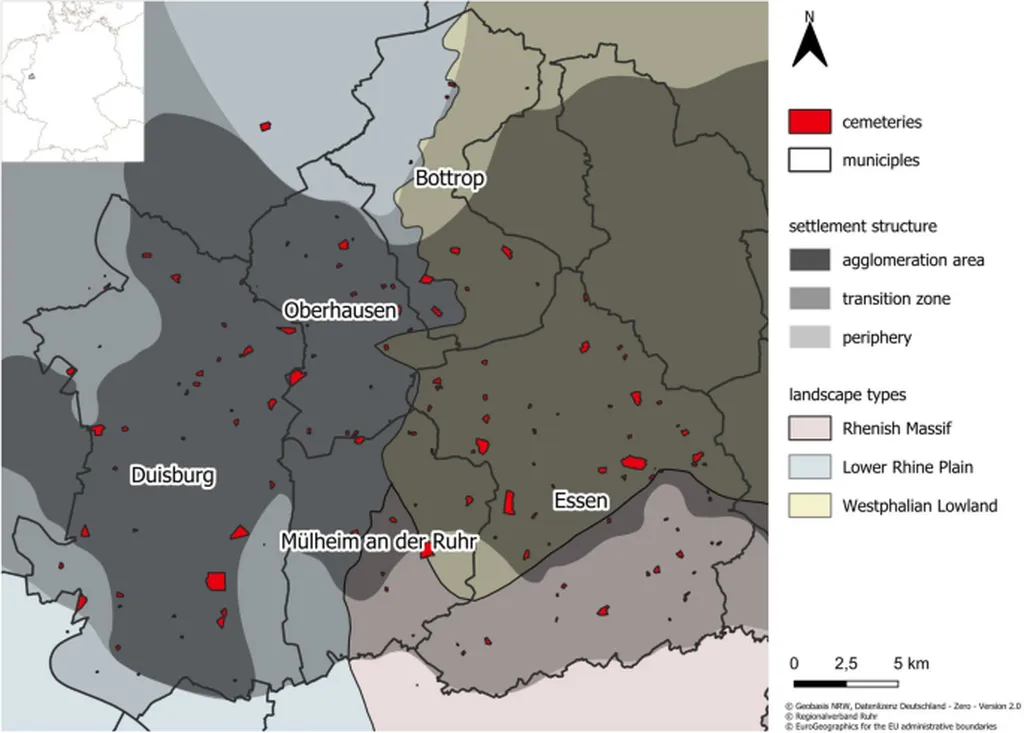In the heart of Germany’s Ruhr Metropolis, a region grappling with the dual pressures of urbanization and climate change, a groundbreaking study has shed light on the future of urban avian biodiversity. Led by Malte Bührs from the Institute of Geography at Ruhr-Universität Bochum, the research published in ‘Ecological Solutions and Evidence’ (translated to English as ‘Ecological Solutions and Evidence’) offers a sobering yet crucial insight into the delicate balance between urban development and ecological resilience.
The study, which employs a sophisticated multispecies, multimodel approach, integrates citizen science data, remotely sensed data, and ensemble species distribution models (ESDMs) to predict habitat suitability for 26 bird species. This comprehensive approach allows for a nuanced understanding of how changes in land use and climatic conditions will impact urban biodiversity.
“Our findings highlight the urgent need for conservation strategies that prioritize green space preservation and biotope network restoration,” Bührs emphasizes. The research predicts a decline in habitat suitability for woodland and farmland birds, with significant variations between threatened and non-threatened species. Open land and synanthropic birds, which thrive in human-altered environments, exhibit mixed responses to future conditions.
The study’s predictions are based on robust projections of urban expansion and its ecological impacts. It reveals that agricultural and forested areas are expected to decrease by 1.7% and 2.9%, respectively, while built-up zones are projected to increase by 3.8%. These transformations underscore the importance of inner-urban green spaces in sustaining urban biodiversity.
The integration of citizen science and remote sensing data has proven to be a game-changer, effectively reducing the effects of data deficiencies and enabling spatially explicit predictions of biodiversity trends. This approach offers a scalable and cost-effective solution to guide conservation efforts, ensuring the persistence of urban biodiversity and associated ecosystem services.
For the energy sector, the implications are profound. As urban areas expand, the demand for energy infrastructure will inevitably increase. However, the study’s findings underscore the need for a balanced approach that considers the ecological impacts of urban growth. By incorporating biodiversity considerations into regional strategies, policymakers and urban planners can ensure that energy infrastructure development does not come at the expense of urban biodiversity.
The study’s practical implications are far-reaching. It calls for adaptive biodiversity monitoring and the integration of biodiversity considerations into regional strategies under climate change scenarios. By doing so, the energy sector can contribute to the preservation of urban biodiversity, thereby enhancing the resilience of urban ecosystems and the well-being of urban dwellers.
In the face of global environmental change, the study’s findings serve as a clarion call for action. They highlight the urgent need for conservation strategies that prioritize green space preservation, biotope network restoration, and adaptive biodiversity monitoring. By heeding this call, we can ensure that our urban areas remain vibrant, resilient, and ecologically sustainable.
As Bührs aptly puts it, “The integration of citizen science and remote sensing offers a powerful tool for guiding conservation efforts. It is a scalable and cost-effective solution that can help us navigate the complex challenges posed by urbanization and climate change.” This research not only shapes future developments in the field but also sets a precedent for how we can harmonize urban growth with ecological resilience.

